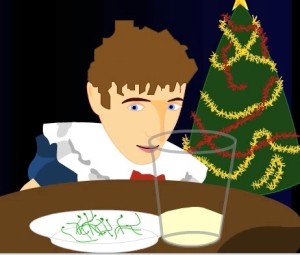They’re probably still eating sprout-laden sandwiches at science-based faculty meetings at Kansas State University.
 Following an initial announcement of eight people sick with Salmonella from sprouts in Kansas and Missouri – followed by surveillance silence – the U.S. Centers for Disease Control now reports that 26 people were infected with the outbreak strains of Salmonella Muenchen (25 people), or Salmonella Kentucky (1 person), as reported from 12 states. Eight people were hospitalized and no deaths were reported.
Following an initial announcement of eight people sick with Salmonella from sprouts in Kansas and Missouri – followed by surveillance silence – the U.S. Centers for Disease Control now reports that 26 people were infected with the outbreak strains of Salmonella Muenchen (25 people), or Salmonella Kentucky (1 person), as reported from 12 states. Eight people were hospitalized and no deaths were reported.
In February 2016, state and local health and regulatory officials in several states traced back the source of the sprouts from multiple restaurant locations where ill people ate them, and identified Sweetwater Farms of Inman, Kansas, as a supplier of alfalfa sprouts to all of these locations. The FDA collected and tested irrigation water and alfalfa sprout samples from Sweetwater Farms LLC and found Salmonella Kentucky and Salmonella Cubana. Salmonella Muenchen was not isolated.
On February 19, 2016, FDA and other federal, state, and local agencies briefed Sweetwater Farms LLC on their findings, and the firm voluntarily recalled alfalfa sprouts grown from a specific seed lot.
On February 26, 2016, Sweetwater Farms informed the FDA that it would recall all of its sprout products from the market.
After the recalls by Sweetwater Farms were completed, Salmonella Muenchen illnesses were still reported by people who reported eating alfalfa sprouts before they got sick. FDA traceback investigations indicated that several sprouters other than Sweetwater Farms produced the alfalfa sprouts these ill people ate. All of these sprouters, as well as Sweetwater Farms, used the same seed lot.
FDA tested samples of seeds from this lot and isolated Salmonella Cubana with the same DNA fingerprint of the Salmonella Cubana isolated in irrigation water from Sweetwater Farms. FDA contacted the seed supplier, who then called for the return of the contaminated seed lot from growers. The seed supplier is not named here because FDA is prohibited by law from releasing certain information about supply chains, which may constitute confidential commercial information. However, FDA has been able to confirm that all domestic sprouters who received contaminated seeds either returned or destroyed the seeds, and the shelf life of all sprouts grown from this seed lot has expired. Therefore, no sprouts from the contaminated seed lot are expected to be on the market.
 On May 13, 2016, CDC reports that this outbreak appears to be over. FDA has provided the sprouters with information on reducing microbial food safety hazards for sprouted seeds and complying with new standards for growing, harvesting, packing, and holding of produce for human consumption under the Produce Safety Rule, which beings to go into effect for sprouters in January 2017 with additional time for small and very small operations. In particular, covered sprouters will now be required to comply with sprout-specific requirements such as treating seeds to reduce the presence of microorganisms of public health significance, testing the growing environment for Listeria as well as testing each production batch of spent sprout irrigation water or sprouts for E. coli O157:H7, Salmonella species and, under certain conditions, other pathogens. In addition, sprouters would be expected to comply with all other applicable requirements of the Produce Safety Rule, such as requirements related to worker health and hygiene, agricultural water and buildings, tools and equipment.
On May 13, 2016, CDC reports that this outbreak appears to be over. FDA has provided the sprouters with information on reducing microbial food safety hazards for sprouted seeds and complying with new standards for growing, harvesting, packing, and holding of produce for human consumption under the Produce Safety Rule, which beings to go into effect for sprouters in January 2017 with additional time for small and very small operations. In particular, covered sprouters will now be required to comply with sprout-specific requirements such as treating seeds to reduce the presence of microorganisms of public health significance, testing the growing environment for Listeria as well as testing each production batch of spent sprout irrigation water or sprouts for E. coli O157:H7, Salmonella species and, under certain conditions, other pathogens. In addition, sprouters would be expected to comply with all other applicable requirements of the Produce Safety Rule, such as requirements related to worker health and hygiene, agricultural water and buildings, tools and equipment.
An updated table of raw sprout related outbreaks is available at: https://barfblog.com/wp-content/uploads/2016/04/Sprout-associated-outbreaks-4-27-16.xlsx


 This product is known to have been distributed in British Columbia, Alberta, Saskatchewan and Ontario and may have been distributed nationally.
This product is known to have been distributed in British Columbia, Alberta, Saskatchewan and Ontario and may have been distributed nationally. & Cobb Inc., Feasterville, Pa.
& Cobb Inc., Feasterville, Pa..jpg) But we can’t find any safety data.
But we can’t find any safety data..jpg)
.jpg) Two ill persons have been hospitalized, and no deaths have been reported.
Two ill persons have been hospitalized, and no deaths have been reported..jpg) so they might not be processed, handled, and stored as human food would. Conditions suitable for sprouting the seed also permit bacteria that might be present on seeds to grow and multiply rapidly.
so they might not be processed, handled, and stored as human food would. Conditions suitable for sprouting the seed also permit bacteria that might be present on seeds to grow and multiply rapidly. processed sprouted seeds pose additional safety concerns, EFSA said.
processed sprouted seeds pose additional safety concerns, EFSA said..jpg) all," said
all," said .jpg) sprouting.
sprouting..jpg) them acceptable.
them acceptable..jpg) widely distributed that no one really knows where they have gone or for how long they might remain for sale. One prediction, based on the probable package labeling, is that they could remain on shelves for 3 more years.
widely distributed that no one really knows where they have gone or for how long they might remain for sale. One prediction, based on the probable package labeling, is that they could remain on shelves for 3 more years..jpg) 16 other companies. One of those 16 broke its shipment up further, selling the seeds on to 70 additional companies: 54 in Germany, 16 in 11 other countries within the EU.
16 other companies. One of those 16 broke its shipment up further, selling the seeds on to 70 additional companies: 54 in Germany, 16 in 11 other countries within the EU.